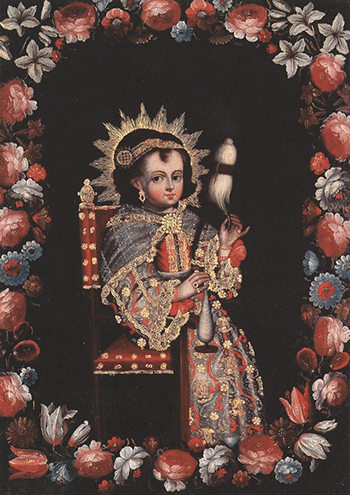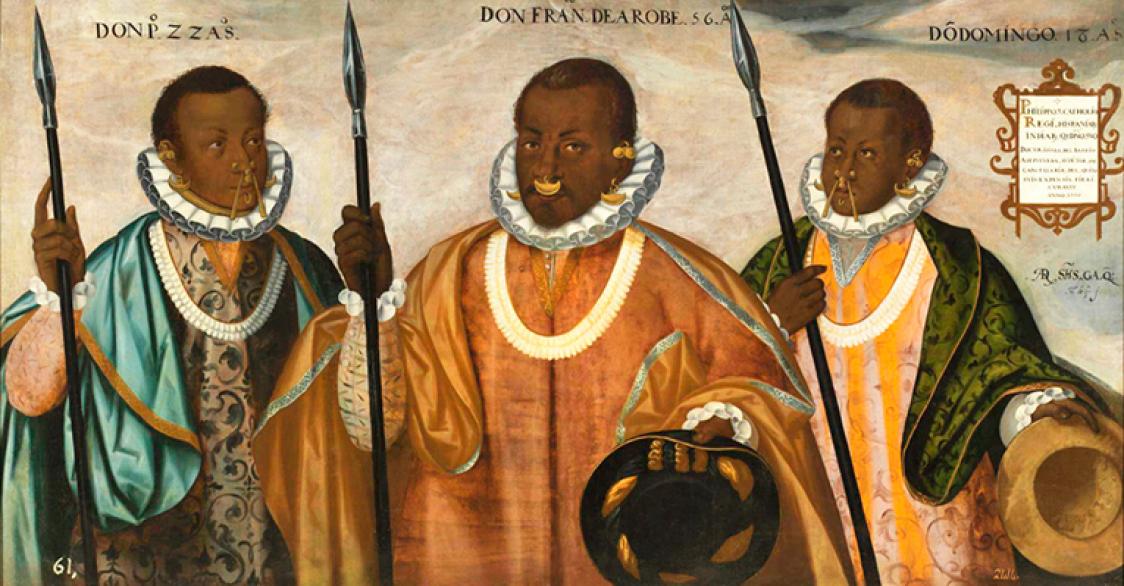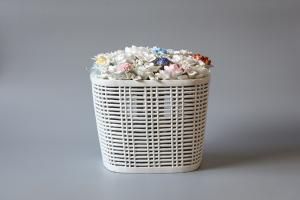THE ARTS IN LATIN AMERICA, 1492-1820
Los Angeles County Museum of Art (LACMA)
Date(s): August 5–October 28, 2007
The Los Angeles County Museum of Art (LACMA) presents The Arts in Latin America, 1492-1820, an ambitious exhibition of more than 200 works of art created in the Spanish viceroyalties of New Spain (which today comprises Mexico and the countries of Central America, including Guatemala, Cuba, Dominican Republic, and Puerto Rico) and Peru (now the countries of Ecuador, Venezuela, Colombia, Chile, Bolivia, and Peru), as well as the Portuguese colony of Brazil.
Spanning three centuries, from the arrival of Christopher Columbus to the emergence of the national independence movements, the exhibition explores both the artistic differences and commonalities throughout colonial Latin America, and features a remarkable collection of objects from public and private collections from around the world--many seen for the first time in the United States. The Arts in Latin America, 1492-1820 opens at LACMA on August 5, 2007 and remains on view through October 28, 2007. It will be the final stop of a major international tour.
 "LACMA is delighted to bring this revelatory exhibition of richly diverse objects from Latin America to the City of Los Angeles," said Michael Govan, LACMA CEO and Wallis Annenberg Director. "Our visitors have an unprecedented opportunity to see some of the most significant pieces created in the New World, many expressly restored for the exhibition, including a monumental sculpture of the crucifix from the Monastery of São Bento in Olinda, Brazil. Colonial Latin American art is a unique, original, and marvelous epoch of art history, which will become fully understood in this landmark exhibition."
"LACMA is delighted to bring this revelatory exhibition of richly diverse objects from Latin America to the City of Los Angeles," said Michael Govan, LACMA CEO and Wallis Annenberg Director. "Our visitors have an unprecedented opportunity to see some of the most significant pieces created in the New World, many expressly restored for the exhibition, including a monumental sculpture of the crucifix from the Monastery of São Bento in Olinda, Brazil. Colonial Latin American art is a unique, original, and marvelous epoch of art history, which will become fully understood in this landmark exhibition."
Organized by the Philadelphia Museum of Art in collaboration with LACMA and the Antiguo Colegio de San Ildefonso, Mexico City, The Arts in Latin America, 1492-1820 presents a panoramic view of the artistic achievements of the New World, beginning with Columbus’s first encounter with the people of the Caribbean and concluding with the final moments of the colonial era--a period marked not only by the independence movements and formation of national states, but also by the rise of academic art.
During the colonial era, the various art forms produced throughout Latin America reflected the seismic changes that took place and were central in the development of new identities. The exhibition includes an impressive assortment of objects in all media--painting, sculpture, feather-work, shell-inlaid furniture, objects in gold and silver, ceramics, and textiles--that reveal the interchange between Native, European, African, and Asian cultures in Latin America. Also featured are examples of paintings by some of the most prominent masters working in the colonies, such as Miguel Cabrera, Luis Juárez, and Carlos de Villalpando in Mexico; and Melchor Pérez Holguín and Miguel del Berrío in Bolivia, among many others.
LACMA's presentation offers a unique perspective of the period by grouping the objects into several compelling themes, and incorporates several artworks seen only in Los Angeles. The first part of the exhibition traces the early period of contact between native and European artists and how the formation of new identities became the subject of some of the most intriguing works of art created in the viceroyalties, including casta paintings (depictions of racial mixings), painted maps, and festivals. The second part of the exhibition addresses the development of painting, beginning with the arrival of European masters in the sixteenth century to the emergence of local schools of painting in the seventeenth and eighteenth centuries, which manifest a high degree of stylistic and iconographic originality.
The tradition of local devotions, including the Virgin of Guadalupe in Mexico or the depiction of Archabusier Angeles from Peru, will show the great originality that coloni al painting reached. Other major themes include the splendor of silverwork (Latin America was the main supplier of silver world wide); and the tradition of polychrome sculptures, an artistic form that developed in Europe and achieved some of its highest exponents in the New World, as seen in works from Brazil, Ecuador, Guatemala, and Mexico, among other countries. Lastly, the exhibition features an assortment of decorative arts, showcasing how luxury became part of the everyday fabric of colonial society and how the amalgam of visual vocabularies converged in the New World, resulting in works of tremendous vibrancy.
History
In 1492, Columbus's world changing voyage joined a vast network of trade routes between Asia, Europe, and Africa to the complex systems of trade and interaction that were already in place throughout the Americas.
Africans (both free and enslaved) accompanied the early Spanish and Portuguese expeditions, and before the end of the sixteenth century, trade with Japan and China was established via the legendary Manila galleons. While the indigenous arts like feather painting and weaving continued, European artists traveled to the Americas to ply their trade and train native craftsmen.
With the blessing of the Pope, the Spanish and Portuguese monarchs began converting the indigenous peoples to Christianity. The missionaries established hundreds of churches, religious houses, and missions to educate the natives. During this period, churches were in need of religious objects and the indigenous people applied their artistic skills to create many of these relics, including silver chalices, candlesticks, censers, and elaborately wrought altarpieces, as well as embellished paintings and sculptures depicting Christ, the Virgin Mary, and a host of saints. Also, secular art--furnishings, luxury goods, portraits, and ephemeral decorations--were fabricated for the viceroys and other crown officials, along with the nobility and merchant class who moved all these examples of material culture around the vast region of Latin America.
Credit
The international tour of The Arts in Latin America, 1492-1820 was made possible by Fundación Televisa. The exhibition was organized by the Philadelphia Museum of Art in collaboration with the Los Angeles County Museum of Art and the Antiguo Colegio de San Ildefonso, Mexico City. This exhibition was also supported by an indemnity from the U. S. Federal Council on the Arts and the Humanities. Initial scholarly research was supported by a Collaborative Research Grant from The Getty Foundation; funding for conservation was provided in part by the Huber Family Foundation and the Ceil and Michael E. Pulitzer Foundation. The Los Angeles presentation was made possible in part by LACMA's Wallis Annenberg Director's Endowment Fund, LACMA's Art Museum Council, The Getty Foundation, and Bank of America. In-kind support for the Los Angeles presentation was generously provided by KKJZ 88.1 FM. The organizers are grateful for the special collaboration of the National Council for Culture and the Arts (CONACULTA), the National Institute of Anthropology and History (INAH), and the National Institute of Fine Arts (INBA), Mexico.
Address:
Los Angeles County Museum of Art
5905 Wilshire Boulevard
Los Angeles, CA 90036
Tel. 323-857-6000
Website: www.lacma.org
Photo Credits: Don Francisco de la Robe and His Sons Pedro and Domingo, 1599, by Andrés Sánchez Gallque (Andean, active late 16th-early 17th century). Oil on canvas, 36 ¼ x 68 7/8 in. Museo Nacional del Prado, Madrid, Deposited in the Museum de América, Madrid



